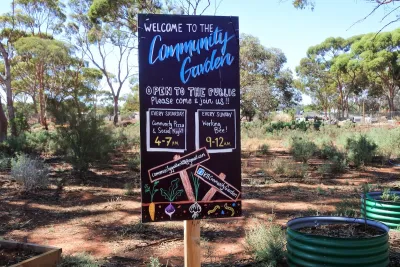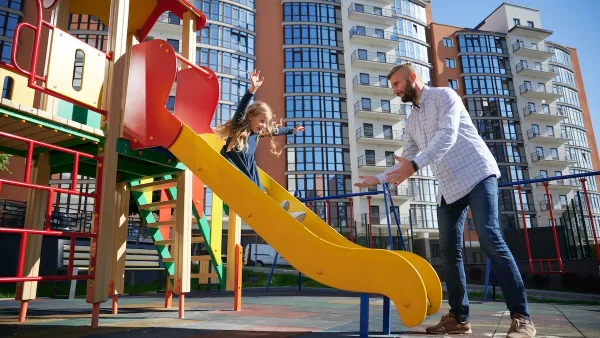Explore successful community-led initiatives that revitalize neglected urban spaces, fostering beauty and reclaiming areas for public benefit and enjoyment.

In cities across the world, vacant lots and abandoned buildings represent urban decline. These spaces can invite vandalism and litter. However, when residents and urban planners join forces, these neglected areas can turn into public spaces that build community pride and engagement.
The benefits of community-led Bbautification
Community-led initiatives are pivotal in turning underutilized city areas into vibrant, functional spaces for residents. When community members become involved in revitalization projects, they ensure new developments lead to community-aligned outcomes. Each initiative can give everyone a voice and foster ownership, strengthening their social ties.
When residents take an active role in shaping their neighborhoods, there are far-reaching benefits, including:
- Economic uplift and increased property values: Transformed neighborhoods attract more tourism, business and investment opportunities. Local businesses can benefit from increased foot traffic, and property values often rise.
- Enhanced community cohesion: Working together to beautify a neglected space can bond a community over a shared project, creating an improved sense of belonging among community members.
- Improved public health: Urban spaces with green infrastructure and public gathering spots make cities more beautiful, which promotes well-being.
- Increased sustainability: Community-led initiatives often incorporate sustainability elements that contribute to long-term ecological resilience. Planting trees and other greenery mitigates urban heat island effect, naturally reducing temperature and carbon emissions.
Challenges for urban beautification projects
While community involvement has the power to improve urban spaces, these projects can come with these common challenges:
1. Securing funding and resources
Funding is one of the greatest barriers to community development, as securing it takes time and effort. Projects succeed when they rely on public and private funding. To make financing more attractive, urban planners and community leaders should create a proposal that outlines the project’s benefits and long-term impact.
2. Preventing vandalism and property damage
Vandalism can be a serious threat to revitalization efforts as it causes financial losses and discourages community participation. Urban planners and local organizers often employ property insurance as a protective measure. However, insurance claims take time to process, and insurance companies have 30 days to file a notice of intentions. Waiting for a resolution can delay progress.
Establishing stewardship programs and incentive structures is key. They encourage residents to take an active role in maintaining public spaces. Plus, local businesses can offer discounts for community volunteers to promote long-term engagement and care for shared spaces.
3. Navigating bureaucratic and legal hurdles
Community-led projects often require compliance with city regulations, zoning laws and permitting processes. Some projects may require legal approvals that involve multiple stakeholders. Building relationships with local government officials and urban planning departments early on can streamline these processes.
Four strategies for transforming neglected spaces
Urban planners and community leaders can use the following four strategies to revitalize rundown neighborhoods.
1. Create community gardens and green spaces
Turning vacant lots into community gardens and green spaces provides residents with accessible outdoor areas while improving urban aesthetics and environmental stability. Involving residents in the planning and maintenance of gardens ensures the continued success of these green spaces.
2. Beautify with public art and murals
Murals, sculptures and interactive art installations can beautify urban areas while celebrating local history and identity. These projects also deter vandalism. Partnering with local artists and engaging the community in design choices can further enhance the impact of public art initiatives.
3. Build pop-up parks and temporary spaces
Pop-up parks offer flexible, low-cost solutions for revamping neglected areas. This strategy also gives urban planners a chance to test different concepts before determining what permanent developments best suit a neighborhood’s needs.
4. Reuse vacant lots and buildings
Turning vacant lots and buildings into a place for community gatherings makes more efficient use of existing infrastructure. Urban planners can further promote sustainability by integrating smart technologies. Advanced algorithms can help with waste reduction and water conservation efforts, helping revitalized spaces remain environmentally friendly and cost-effective.
Empowering communities to shape public spaces
Renewing neglected city areas is essential for making communities stronger and ensuring sustainable growth. However, urban planners must collaborate with residents to ensure these spaces turn into thriving, useful environments. With the community support behind revitalization projects, cities can cultivate lasting positive change.

Maui's Vacation Rental Debate Turns Ugly
Verbal attacks, misinformation campaigns and fistfights plague a high-stakes debate to convert thousands of vacation rentals into long-term housing.

Planetizen Federal Action Tracker
A weekly monitor of how Trump’s orders and actions are impacting planners and planning in America.

San Francisco Suspends Traffic Calming Amidst Record Deaths
Citing “a challenging fiscal landscape,” the city will cease the program on the heels of 42 traffic deaths, including 24 pedestrians.

Defunct Pittsburgh Power Plant to Become Residential Tower
A decommissioned steam heat plant will be redeveloped into almost 100 affordable housing units.

Trump Prompts Restructuring of Transportation Research Board in “Unprecedented Overreach”
The TRB has eliminated more than half of its committees including those focused on climate, equity, and cities.

Amtrak Rolls Out New Orleans to Alabama “Mardi Gras” Train
The new service will operate morning and evening departures between Mobile and New Orleans.
Urban Design for Planners 1: Software Tools
This six-course series explores essential urban design concepts using open source software and equips planners with the tools they need to participate fully in the urban design process.
Planning for Universal Design
Learn the tools for implementing Universal Design in planning regulations.
Heyer Gruel & Associates PA
JM Goldson LLC
Custer County Colorado
City of Camden Redevelopment Agency
City of Astoria
Transportation Research & Education Center (TREC) at Portland State University
Jefferson Parish Government
Camden Redevelopment Agency
City of Claremont





























